Philippine Scouts: US Asian Soldiers
The Spanish-American War and the Conquest of the Philippines
Whereas in Central America, the United States gradually established controllable regimes, then with respect to the islands of the West Indies, it had much more obvious intentions about their complete subordination to the American government. But the West Indies were all divided. But the United States did not want to quarrel with Britain or even France - the American leadership, as we know, always avoided direct conflicts with more or less strong opponents. Therefore, the United States drew attention to the Spanish colonial possessions.
By this time, Spain was far from the same as in the era of the great geographical discoveries. It was a weak economically and militarily state that had not played a serious role in world politics for a long time. But, by tradition, Spain continued to own a number of colonies in the West Indies, West Africa, Southeast Asia and Oceania. The United States did not want to climb into Africa, but the Spanish colonies in the West Indies had certain types. Firstly, they were in close proximity to the US coast. Secondly, in Cuba and Puerto Rico, anti-Hispanic sentiments of the local Creole and Afro-Caribbean populations grew, fueled by the neighborhood with the Republican USA, which historical the period had not yet completely lost the halo of the “land of freedom”, which had won its independence in the war with the British Empire.
Thus, by the second half of the 1890's. In the United States of America, there was growing confidence in both the political elite and the public in the need to step up efforts to acquire colonies. The object of colonialist aspirations of the United States were selected Spanish possessions in the West Indies and Asia-Pacific. In 1898, a war broke out between the United States of America and Spain, the formal cause of which was the “care” of the American government for the liberation of the people of Cuba from Spanish rule.
As Admiral of Germany notes fleet and the naval historian Alfred Stenzel, analyzing the causes of the Spanish-American war of 1898, “Spain, having become rich at the expense of its colonies and living on their incomes, significantly worsened their position in the colonies by many years of messy housekeeping in them and lost most of them, thanks precisely its management system. Unrest was especially frequent in Cuba, due to the proximity of a large American republic, which had financial interests there and zealously fanned popular discontent. The more clearly the complete inability of the Spanish government to establish order on this island was outlined, the more the opinion of the need for intervention was strengthened in the United States ”(Stenzel A. History of Wars at Sea. - M.: Izografus, EKSMO-Press. 2002.).
Despite the fact that the Spanish armed forces numerically surpassed the American army, the United States used the advantages of its navy, and secondly, the weaknesses of the Spanish army, which was characterized by a low level of discipline, corruption, and poor supply. After the resistance of the Spanish army was crushed, Spain lost its key colonial possessions, which belonged to it from the 16th century - Cuba, Puerto Rico, the Philippines, as well as Pacific Guam and then the Caroline and Mariana Islands. The last Spanish government sold in Germany 1899. Guam, Puerto Rico, and the Philippines were ceded to the United States, and Cuba formally gained state independence, but in fact remained under US political control. For these important colonies, Spain received compensation from the United States in the amount of 20 million dollars.
The Philippines, unlike Cuba and Puerto Rico, were at a very significant distance from the United States of America. Moreover, there lived a multi-million local population, represented by a large number of diverse peoples and tribes who spoke Austronesian languages (Tagalog, Sebuano, Ilokano, Bikolsky, and so on). Part of the population of the Philippines - the so-called "Moro" (the Spanish name of the Moors) profess Islam, but the majority during the years of Spanish domination adopted Catholicism and were largely Spanishized (names and surnames, language, many features of culture and life). For more than three centuries of Spanish rule in the Philippines, it was the Spanish language that was given the role of the only written language of the islands — it was spoken in administrative institutions, records were kept, schools were taught. In some Philippine languages, Spanish borrowing makes up up to 40% lexical stock. Therefore, the influence of Spanish culture on the islands has always been extremely significant.
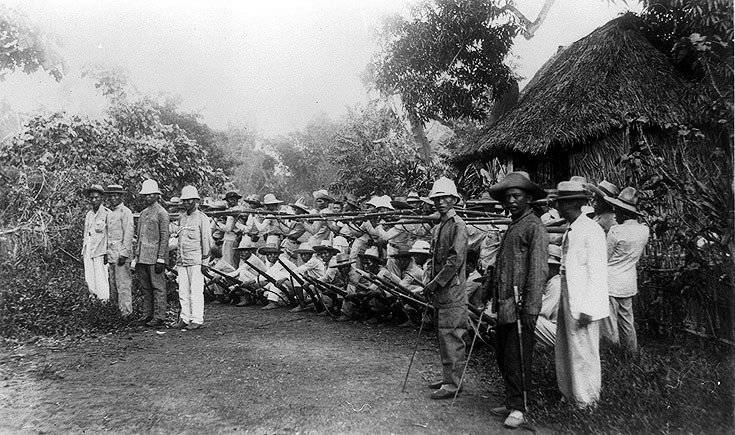
However, through the “Spanishization” of the Philippine elite, revolutionary ideas spread on the islands, which were introduced to the native environment by the few Filipinos who managed to get a European education and visit the metropolis and other countries of continental Europe. Naturally, the Filipino intellectuals secretly dreamed of political independence from Spain, especially since the latter, by the end of the 19th century, had completely ceased to fulfill a civilizing progressive mission, weakened and turned into a “parasite”, pumping out all the juices from the colonies and giving nothing in return. In the Philippines, a powerful anti-Spanish movement was formed, headed for some time by the famous Filipino writer and philosopher Jose Rizal, who is still considered one of the symbols of the Philippine struggle for independence.
12 June 1898, taking advantage of the weakening of Spain, Filipino nationalists, led by Emilio Aguinaldo, proclaimed the independence of the Philippine Islands. However, this decision was extremely disliked by the Americans, who bought the Philippines from Spain, by no means so that the islanders could gain political independence and start building their own state. The Americans openly provoked the Philippine Republican government to the conflict, which eventually followed the killing of a Filipino local resident by an American soldier guarding a military base. The incident was used to attack the positions of the Republican troops of the Philippines and establish American supremacy on the islands.
Since the Philippines already had a strong national identity and many Filipinos who participated in the anti-Hispanic uprisings were completely unwilling to change one colonial dependence to another, armed resistance to American colonization began on the islands. 1899 to 1902 The Philippine-American war lasted, of course, ending with the defeat of significantly inferior military-technical and material equipment, organization and combat skills of the Filipinos. Nevertheless, some pockets of resistance in the Philippines persisted until the beginning of the First World War. Many hinterland Americans could not fully control themselves. As for the Spanish influence in the Philippines, culturally and linguistically, it persists until the present time, although the final cessation of learning Spanish as a compulsory subject in the Philippine school curriculum took place in the 1986 year, and attempts were made to oust the Spanish language and “anglization” of the islands Americans almost from the first years of the colonization of the Philippines. In the 2008 year, not wanting to break with traditions and forget the history of the island, the Philippine leadership returned Spanish as a compulsory subject to the country's secondary schools.
Like other colonial powers, almost immediately after the start of expansion in the Philippines, the United States realized the need to form military units staffed by local residents. First, the latter were much better oriented in the jungles of the Philippine Islands, and secondly, their use helped to reduce the cost of maintaining the American military contingent from the metropolis. Among the Filipinos, in turn, there were not so few who wanted to enlist in the US Army, because service in it promised certain opportunities and privileges, raised the social status of both the soldier and his family.
Creating Filipino Scouts
Back in 1896, when the anti-Spanish uprising began in the Philippines, a rich Spanish latifundist and military leader Colonel Eugenio Blanco, who owned lands near the town of Macababe on Luzon Island, organized a regiment from his peons (farm laborers) and customers. With the beginning of the Spanish-American War, the Makababe regiment was partially redeployed to the Caroline Islands, but partly it turned out to be in the city of Makabeb, which was occupied by American troops. Since, in effect, the Filipino soldiers of the regiment did not care who to serve, many of them were asked to serve in the US Army. Of these, a company of “scouts of Macabebe” was formed, commanded by Lieutenant Matthew A. Batson. Since the “scouts” proved to be good soldiers, familiar with the conditions of the war in the jungle and differing in their military qualities, it was decided to create five mouths of scouts for 128 soldiers and officers in each. Initially, all scouts were recruited from the Filipinos, who previously served in the Spanish army. Showing their best side in the battles with the Spanish troops, the scouts were organized into the Philippine cavalry squadron.
In 1901, the formation of armed units began as part of the American army, known as the Philippine Scouts (abbreviated as PS). Originally, they were created to fight the rebel movement. US President Theodore Roosevelt, having listened to the advice of generals and officers who participated in the Philippine campaign, decided to form a unified structure of Philippine scouts. In October, 1901 began the creation of a body of scouts from 50 companies, staffed by Filipino military personnel. The total number of Filipino scouts for the period reached 5000 people. As in many other colonial units, from among the natives were recruited ordinary and non-commissioned officers of the Philippine scouts, the officer positions were mainly personnel officers of the American army. However, a number of Filipino soldiers received training at the US Military Academy and became officers. The training for Filipino officers at West Point Academy began in 1910. Initially, eight Filipino officers received military education in the United States.
In 1919-1920 Filipino scout companies were combined into several regiments of the US Army - 43, 45 and 57 infantry regiments, 24 and 25 regiments of the field artillery, 26 th cavalry regiment, 91 and 92 regiments coastal artillery. Also, engineering support units, quartermaster and medical services, and military police were created. Infantry regiments and field artillery regiments were merged with the 31-m Infantry Regiment of the American Army in the Philippine Division.
Initially, Filipino scouts were used against rebel groups that fought in the jungles of the Philippines against the American colonialists. Filipino scouts were used to suppress the resistance of the militant Moro Muslim tribes on the island of Mindanao, in the 1930. - in fights on Holo. However, over the half-century period of existence, the Filipino scouts had to face a much more serious and prepared opponent. They became one of the key combat units of the American army in battles with the Japanese invaders in the Philippines. It should be noted here that after the granting of autonomy to the Philippines in the 1935 year, the armed forces of the autonomy were formed under US control, but the latter remained poorly equipped and poorly trained. In the face of growing likelihood of confrontation with Japan, the American leadership decided to reassign the armed forces of the Philippines to the American armed forces in the Far East. After 26 in July 1941, US President Franklin Roosevelt appointed General Douglas MacArthur as Commander of the US Armed Forces in the Far East (USAFFE), Philippine military units deployed on the Philippine Islands were subordinate to him.
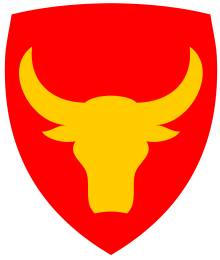 At the time of the creation of the USAFFE, 22 532 military personnel were in their ranks, of which 11 972 military personnel were Philippine scouts. The Filipinos were occupied almost all the ordinary positions in the units deployed on the islands. By the time World War II began, only 15 Filipinos were serving in officer ranks. Two were in commando unit, three - in 45-th Infantry Regiment Philippine Scouts - one in 57-th Infantry Regiment Philippine Scouts, five - in 24-Regiment Field Artillery Philippine Scouts - one in 12-th Quartermaster Regiment Philippine Scouts and one in the 14 Engineer Regiment of the Philippines Scouts. Two Filipino officers served in the headquarters of the American troops.
At the time of the creation of the USAFFE, 22 532 military personnel were in their ranks, of which 11 972 military personnel were Philippine scouts. The Filipinos were occupied almost all the ordinary positions in the units deployed on the islands. By the time World War II began, only 15 Filipinos were serving in officer ranks. Two were in commando unit, three - in 45-th Infantry Regiment Philippine Scouts - one in 57-th Infantry Regiment Philippine Scouts, five - in 24-Regiment Field Artillery Philippine Scouts - one in 12-th Quartermaster Regiment Philippine Scouts and one in the 14 Engineer Regiment of the Philippines Scouts. Two Filipino officers served in the headquarters of the American troops. In fights with the Japanese. Defense of bataana
On December 7, 1941, the Japanese imperial army and navy attacked US positions in Pearl Harbor. The fighting began in the Asia-Pacific region. Japanese troops landed in British Malaya, at the same time attacked Hong Kong and the Philippines. During the three months of the winter of 1941-1942. Japan has achieved tremendous success in hostilities in the Asia-Pacific region, capturing almost all countries and islands in the western Pacific. But it was the Philippine Islands that became the site of fierce fighting between Japanese and American troops. Japanese aggression against the Philippines began on December 9, 1941, when the imperial aviation bombed an American air base on Luzon Island. The next day, the landing of Japanese landing units on the island began. The main Japanese units landed on December 22-24, 1941, and on December 23, General Douglas MacArthur, who commanded US forces in the Philippines, ordered the subordinate units to retreat to the Bataan Peninsula. The capital of the Philippines, Manila, was captured by Japanese troops on January 2, 1942. Thus, American troops gathered on the Bataan Peninsula, plus scattered troops continued to resist in the jungle of individual islands - the nature of the Philippines contributed to the conditions for guerrilla warfare.
On the Bataan Peninsula (Luzon Island), the Philippines were opposed by Filipino scouts and units of the US National Guard, who, despite the Japanese’s considerable superiority in engineering and training, were able to hold defenses for quite a long time. For battles in Bataan, President Roosevelt rewarded Sergeant José Kalugas, Lieutenants Alexander Nininger and Willibald Bianchi.
By the way, it was on the Bataan Peninsula that the last cavalry attack took place in American military history, which is also associated with Filipino scouts. It occurred on January 26 1942. The squadron F of the 26 Cavalry Regiment of the Philippine Scouts received an order from the higher command to capture the village of Morong. However, when the cavalrymen approached the village, they discovered that Japanese troops were already in it.
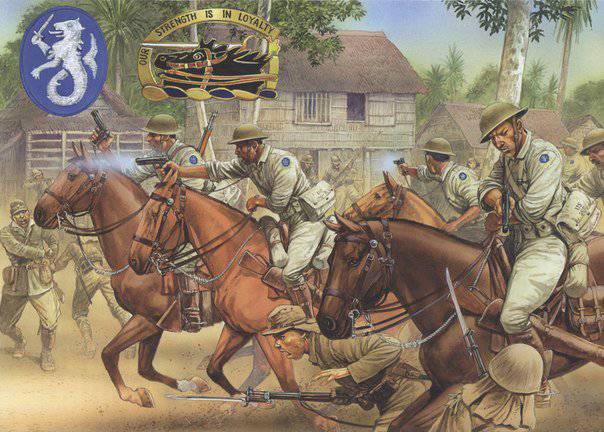
Lieutenant Edwin P. Ramsey, who commanded the avant-garde platoon of the squadron, decided to attack the village before the Japanese unit managed to equip firing positions there. 27 cavalry of an avant-garde platoon led by Ramsey rushed into Morag. Since the saber was no longer in service with cavalrymen, the Ramsey platoon shot the Japanese with pistols. As a result, the Japanese unit was partially destroyed, partly - escaped into the nearby jungle.
The Japanese fleet blocked the sea routes to the Philippine Islands in order to exhaust the American troops stationed on the Bataan Peninsula and force them to surrender. In January, 1942, General Douglas MacArthur, was forced to “halve” the soldiers ’and officer rations, as there was every reason to believe that there was not enough food for the planned six-month defense. Medicine and food were clearly insufficient, especially for heavy service in the tropical climate of the Philippine Islands. However, American and Filipino soldiers and officers heroically held on for four months, despite the epidemics of malaria and dysentery.
Ultimately, 9 on April 1942, Major General Edward King, Jr., announced the surrender of US troops on the Bataan Peninsula. This decision was forced upon him by a severe famine. 70 000 US Army soldiers were captured in Japan. Among them were the 16 000 American and 54 000 Filipino soldiers, sergeants and officers. The Japanese command decided to reduce the number of prisoners of war by organizing the infamous Bataan death march. During the transition from the Bataan Peninsula to a camp in the province of Tarlac, about 10 000 American and Filipino soldiers died. They not only died of thirst, hunger, physical deprivation and illness during the transition, but also became victims of the Japanese escorts, who could afford the unreasonable execution of prisoners of war, all kinds of mockery at them.
The remaining sixty thousand prisoners of war were placed in a former training camp of Philippine scouts in appalling conditions. The camp was designed for 10 000 people, but it was in it six times more. The tropical heat contributed to the spread of dangerous diseases - dysentery, malaria, beriberi. On some days, up to four hundred prisoners of war died. When in January 1943, the camp was closed after eight months of work, the number of deaths reached 26 000 people. American prisoners of war were also transferred to be sent as slaves to Japan and Manchuria. However, many Japanese warships, in the holds of which prisoners of war were transported, were torpedoed by American submarines. When Japan capitulated, two three American prisoners of war were kept there in Japanese concentration camps.
However, some Filipino scouts and American troops managed to remain free during the Japanese occupation of the Philippines and hide in the jungle of the islands. An anti-Japanese guerrilla movement emerged, in which several American officers and Filipino scouts participated. Under the control of the Filipino Communists, the People’s Anti-Japanese Army (Hukbalahap) was created.
The middle of 1944 was marked by a military revenge of the USA and allies in the Asia-Pacific region. After the Mariana Islands were captured by US troops, the Philippines was the next target. October 20 The landing of the American and Australian forces on the island of Leyte began on the 1944, which opened the first page of the Second Philippine Operation, which lasted from October 1944 to September 2 1945. After the liberation of the Philippine Islands by MacArthur’s army and partisans, the remaining Philippine scouts constituted the backbone of the restored Philippine forces. Infantry Division. The 12, 43, 44, 45 infantry regiments, 57, 23, 24 battalions of field artillery, 88 engineering battalion were created. “New Scouts” actively participated in the further destruction of the Japanese troops in the north of the island of Luzon, were engaged in restoring public order in the liberated territories, searching for the Japanese soldiers hiding in the jungle, guarding prisoners of war. Some units of the Filipino scouts after the capitulation of Japan were transferred to Okinawa as an occupational contingent.
The post-war fate of scouts
The capitulation of Japan contributed to a fundamental change in the political map of the Asia-Pacific region. Following the Second World War in the second half of the 1940-x - the beginning of the 1950-x. Many yesterday's colonies gained political independence. New sovereign states appeared on the world map - Burma, North and South Vietnam, Laos, Cambodia, Indonesia. 4 July 1946 political independence was granted to the Philippines. However, granting independence to the Philippines significantly complicated the status of Filipino scouts in the US service - after all, being soldiers and officers of the American army, they turned out to be at the same time foreign citizens. The US government took an unprecedented step, allowing all interested Filipino scouts to continue to serve in units of the American army outside the Philippines.
The United States Congress and the Government of the Philippines approved further corps maintenance in 50 000 Filipino Scouts. In the 12 Infantry Division of the Filipino scouts, only Filipinos served in ordinary positions. The Ministry of War proposed to create another, 14, division of Philippine scouts, but this proposal was never implemented. In the end, in the 1947 year, President Truman decided to gradually disband the Philippine scouts, and in December 1948 they officially ceased to exist.
However, many former Filipino scouts continued to serve in the US military. They participated in the Korean War, the Vietnam War, and some other American military operations. Many children of Filipino scouts also served in the US military. Two of them even received general epaulets - this is Lieutenant General Edward Soriano and Major General Antonio Taguba. Brigadier General Oscar Hillman received his rank, having gone all the long way from a private to a general in the ranks of the American National Guard.
The traditions of Filipino scouts of the period of American colonization were continued in the armed forces of the sovereign Philippines. In November 1950 was formed as a part of the Philippines ground forces regiment of scouts - rangers (originally - battalion). Its main functional purpose was the fight against rebel groups of communists who fought in the jungle of some Philippine islands. The People's Anti-Japanese Army (Hukbalahap), dissolved in 1945, a year after the end of World War II, in 1946, was revived and, as the armed wing of the Communist Party of the Philippines, launched a guerrilla war against the government, accused of pro-American and semi-colonial politics. In turn, the Philippine government, with the help of the United States of America, has stepped up efforts to combat communist guerrillas, which included, among other things, the creation of special forces units focused on anti-insurgency operations.
The Philippines, up to the present day, has remained one of the most important strategic allies of the United States in the Asia-Pacific region, and in the post-war period and subsequent decades of the Cold War, the United States, fearing the deplorable Korean, Vietnamese and Lao experience, made every effort to “the ghost of communism "Did not become a reality in the remaining states of Southeast Asia and the Asia-Pacific region. To this end, the American government paid great attention to the preparation and material support of the armed forces, the police, the security organs of their Asian allies, the most reliable of which included South Korea, South Vietnam (during its existence), Thailand and the Philippines.
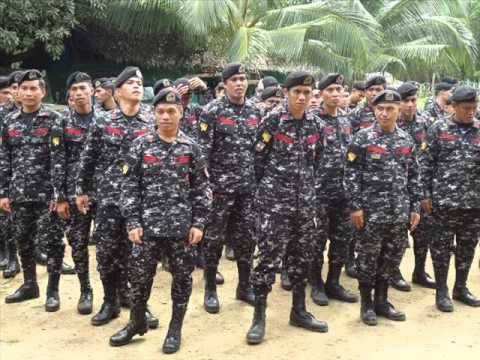 Initially, the most promising and trained officers and sergeants, commanded by Captain Rafael Ileto, were selected from the units of the Philippine army, after which the already selected commanders and instructors began recruiting the regiment with a rank and file. Preference was given to servicemen who had good physical and combat training, had passed the war or had participated in operations against the rebels. Training for scout rangers took place in training centers for programs that trained in jungle war. Direct participation in the training of Filipino scouts rangers was taken by officers who had experience of participation in the Second World War. The battalion commanded by Captain Rafael Ileto was divided into combat units — teams of five men each. The team consisted of an experienced officer or sergeant, medical specialist, radio operator, guide, and fighters. The teams were thrown into the jungle and used for reconnaissance, and then sabotage actions against the communist rebels from Hukbalahap. Scouts attacked individual small groups of communists, destroying manpower and capturing weapon and food. Subsequently, the scouts of Captain Ileto returned to the implementation of reconnaissance operations, extracting information about the deployment and movement of partisan units.
Initially, the most promising and trained officers and sergeants, commanded by Captain Rafael Ileto, were selected from the units of the Philippine army, after which the already selected commanders and instructors began recruiting the regiment with a rank and file. Preference was given to servicemen who had good physical and combat training, had passed the war or had participated in operations against the rebels. Training for scout rangers took place in training centers for programs that trained in jungle war. Direct participation in the training of Filipino scouts rangers was taken by officers who had experience of participation in the Second World War. The battalion commanded by Captain Rafael Ileto was divided into combat units — teams of five men each. The team consisted of an experienced officer or sergeant, medical specialist, radio operator, guide, and fighters. The teams were thrown into the jungle and used for reconnaissance, and then sabotage actions against the communist rebels from Hukbalahap. Scouts attacked individual small groups of communists, destroying manpower and capturing weapon and food. Subsequently, the scouts of Captain Ileto returned to the implementation of reconnaissance operations, extracting information about the deployment and movement of partisan units. However, in the 1960s - 1970s. the scout rangers regiment was disbanded because the Philippine military command had serious complaints about its servicemen. Some regimental servicemen were suspected of looting and insubordination to commanders, others in preparation for a military coup. However, in 1983, the country's military leadership returned to the idea of using scouts - rangers as a special intelligence unit.
The 1 th scout regiment, the Rangers, was re-created, but now it was used not only as a reconnaissance and sabotage command, but also as an air assault unit. At the same time, his focus on counterinsurgency operations remained the same. Moreover, the Philippine authorities have a new dangerous enemy - the Maoist New People’s Army, created on the basis of the units of the old army of Hukbalahap and numbering up to 10 thousand people. In addition to the Maoists, the Muslim rebels, Moro separatists, who are in favor of separating their region from the Philippines and creating a sovereign state there, became more active in the 1980s. It should be noted that the civil war in the Philippines continues to the present. The government forces, despite the help from the United States of America and a number of other states, are not able to overcome the armed resistance of the New People’s Army and the Moro rebel organizations of the Muslims that come with it.
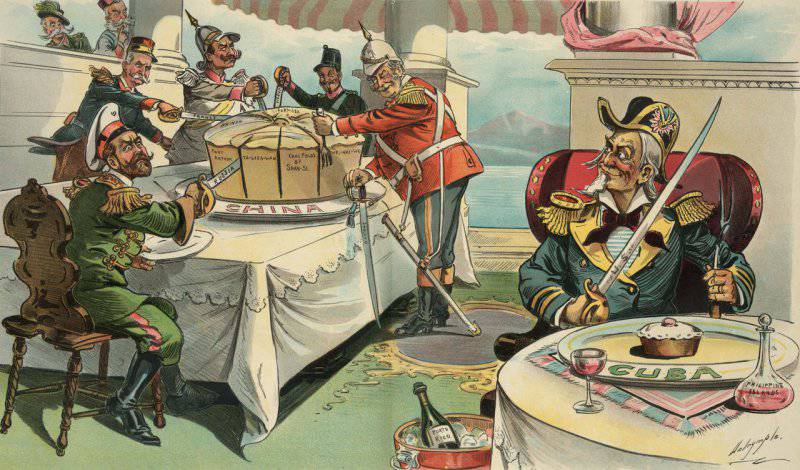
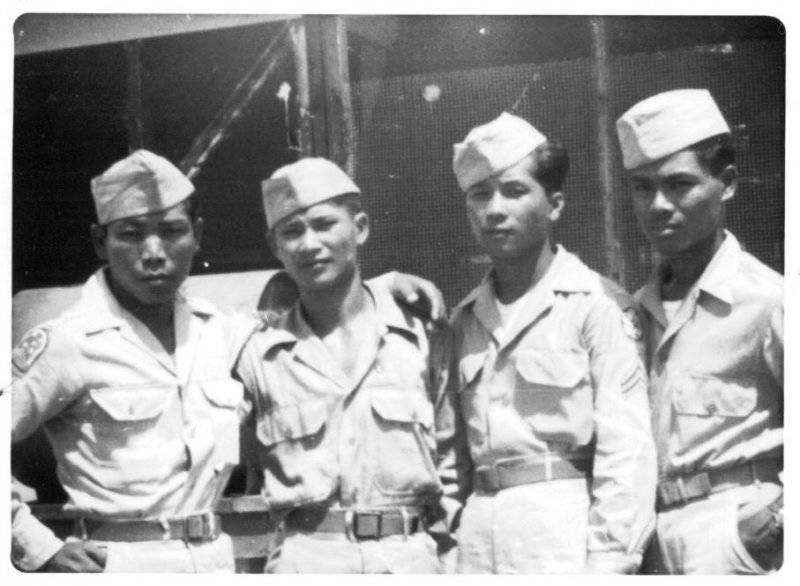
Information